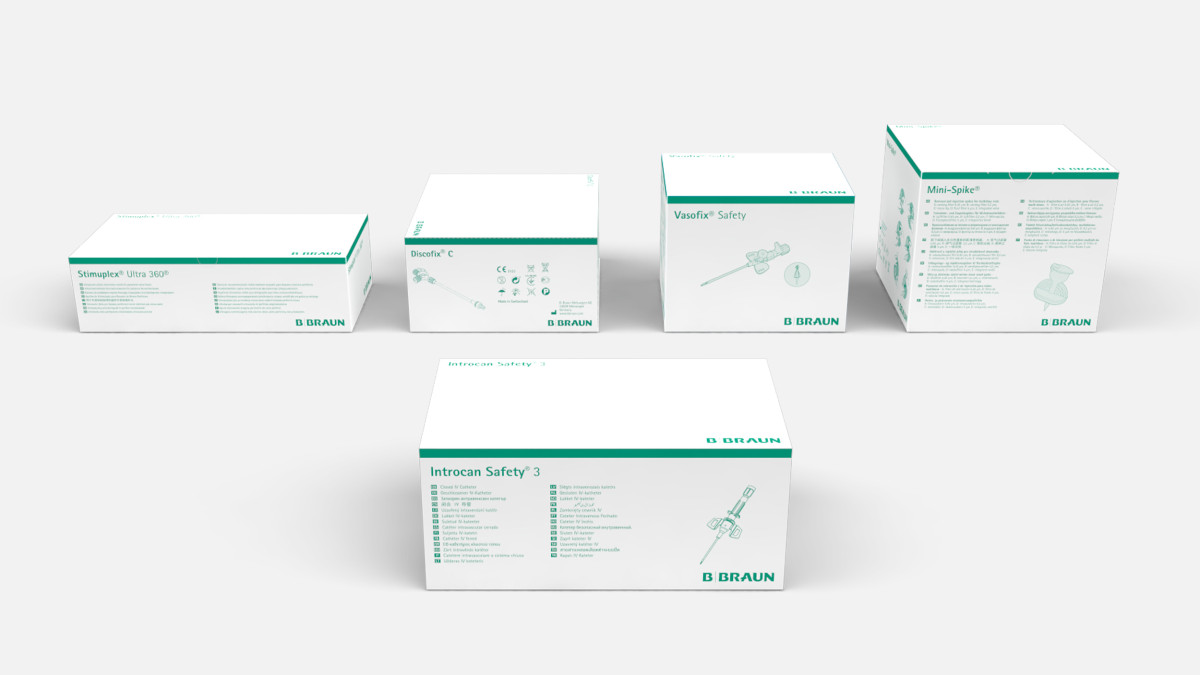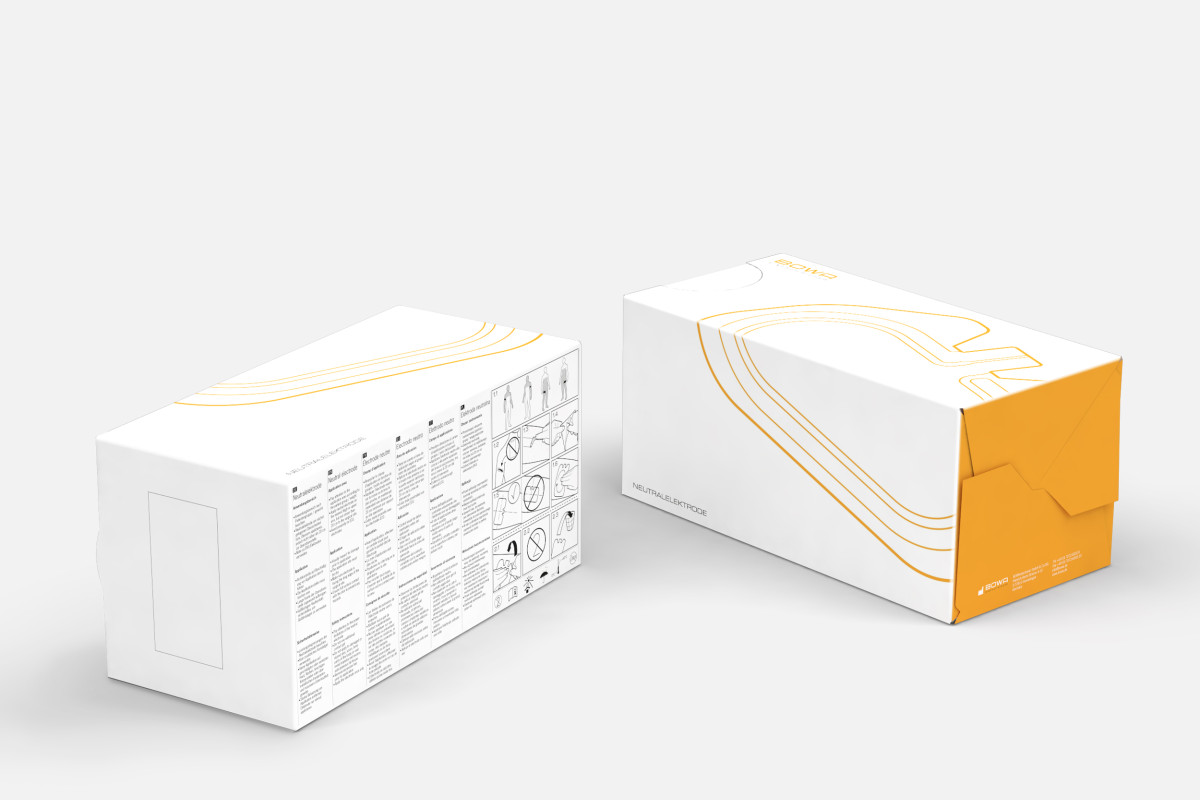Packaging design trends in medical technology
Medical packaging design is an area that is often overlooked even though it plays a critical role in the safety and effectiveness of medical devices and products. Not only does it protect the product from damage and contamination, but it also delivers the first impression a customer gets of the product. It is therefore crucial that packaging designers develop both innovative and sustainable solutions to fulfill these tasks.
As a product design agency in Hamburg, we devote ourselves to the latest packaging design trends and present you with the latest innovations in medical technology design.

The most recent trends in packaging design: User friendly, sustainable, innovative
In the ever-changing world of medical technology design, packaging design is critical. The latest packaging design trends are no longer just about the safety and sterility of products, but also about user-friendliness, sustainability and innovation. Below we have presented some current packaging design trends within the medical sector for you.
User-centric design:
It is becoming increasingly important to create packaging designs that are easy to handle and unpack, especially for time-constrained healthcare workers or patients with limited motor functions. This includes designing packaging that allows for one-handed operation and using color coding or icons for easier identification.
Sustainability:
In view of the growing environmental problems, more and more companies are embracing sustainable packaging concepts. This packaging design trend includes the use of recyclable and biodegradable materials, the reduction of packaging waste and the development of reusable packaging. These eco-friendly practices not only help improve the company's environmental footprint, but are increasingly expected by customers.
Smart packaging:
This packaging design trend includes the integration of technologies such as RFID chips, NFC or QR codes to improve product traceability and provide information. These technologies can help prevent counterfeiting, ensure product safety, and manage inventory efficiently. Important information such as the date of manufacture, batch number, expiry date and other product-related information is stored digitally and can then be called up when required.
Personalization:
As part of the packaging design trend concerning individual medicine, some companies are beginning to personalize their packaging. This can range from patient-specific instructions to packaging tailored to specific patient needs.
Transparent design:
Another trend is the use of transparent packaging materials, which allow the user to see the product before opening the package. This can increase customer confidence while helping to reduce errors in product identification.
Minimalist Design:
This innovative packaging design reflects efforts to reduce environmental impact while maintaining a clean and uncomplicated design. This includes removing unnecessary packaging material, simplifying designs and highlighting important information.
Accessible packaging:
As the proportion of older people in the population increases, there is a growing need for accessible packaging. This packaging design trend aims to ensure that people of all ages and abilities can easily open and use medical products.

Development potential of packaging design trends
Innovative packaging design focuses on enhancing functionality and user friendliness, as well as ensuring the safety and quality of the packaged medical device. Packaging design trends favor easily unpackable concepts to ensure product sterility until use. These innovations can take the form of tear-resistant packaging, one-hand opening mechanisms, or color indicators to show if the packaging is intact. For example, bespoke trays are often designed for implants that securely hold the product while minimizing the risk of contamination. These trays are designed to protect the product throughout the manufacturing and packaging process while allowing for easy and safe handling by medical staff.
While innovation and sustainability are key drivers of packaging design trends, there are also challenges. Compliance with regulatory standards, ensuring product quality and safety, and cost efficiency are some of the key concerns that need to be taken into account.
As experts in medical technology design, we at Held and Team still see room for further improvements in these packaging design trends. There is a need for new materials and technologies that are both sustainable and functional. Research and development in this area can lead to even more innovative and environmentally friendly packaging solutions. At the same time, greater collaboration between medical device manufacturers, packaging designers and material suppliers is required to bring these sustainable and innovative solutions to the market.
The development of efficient packaging design trends is essential in medical technology. It is not only a means of protection, but also serves as a source of information and a marketing tool. By incorporating innovation and sustainability into packaging design, medical device manufacturers can add value to their products while helping to reduce environmental impact.
If you have any further questions about the latest packaging design trends, please feel free to contact us at any time. We look forward to your inquiry.
Read next:
